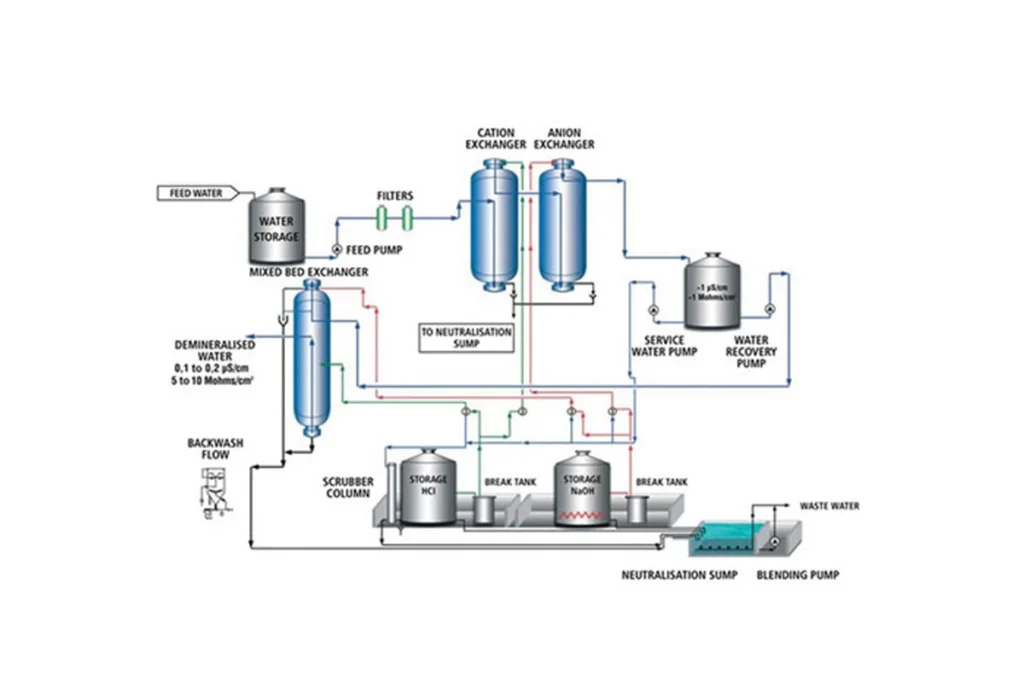
Deionization (DI) or Demineralization
Deionization (DI) or Demineralization

Deionization (DI) or Demineralization
Ion exchange deionizers use synthetic resins similar to those in water softeners. Typically used on water that has been prefiltered, DI uses a two-stage process to remove virtually all ionic material in water. Two types of synthetic resins are used: one to exchange positively-charged ions (cations) for H+ and another to exchange negatively-charged ions (anions) for OH-.
Cation deionization resins (hydrogen cycle) release hydrogen (H+) in exchange for cations such as calcium, magnesium and sodium. Anion deionization resins (hydroxide cycle) exchange hydroxide (OH-) ions for anions such as chloride, sulfate and bicarbonate. The displaced H+ and OH- combine to form H2O.
Resins have limited capacities and must be regenerated upon exhaustion. This occurs when equilibrium between the adsorbed ions is reached. Cation resins are regenerated by treatment with acid which replenishes the adsorption sites with H+ ions. Anion resins are regenerated with a base which replenishes the resin with (OH-) ions. Regeneration can take place off-site with exhausted resin exchanged with deionizers brought in by a service company. Regeneration can also be accomplished on-site by installing regenerable-design deionizer equipment and by proper use of the necessary chemicals.
Two-Bed and Mixed-Bed Deionizers
The two basic configurations of deionizers are two-bed and mixed-bed.
Two-bed deionizers have separate tanks of cation and anion resins. In mixed-bed deionizers the two resins are blended together in a single tank or vessel. Generally mixed-bed systems will produce higher-quality water, but with a lower total capacity than two-bed systems.
Deionization can produce extremely high-quality water in terms of dissolved ions or minerals, up to the maximum purity of 18.3 megohms/cm resistance. However, it generally cannot remove organics, and can become a breeding ground for bacteria actually diminishing water quality if organic and microbial contamination are critical.

